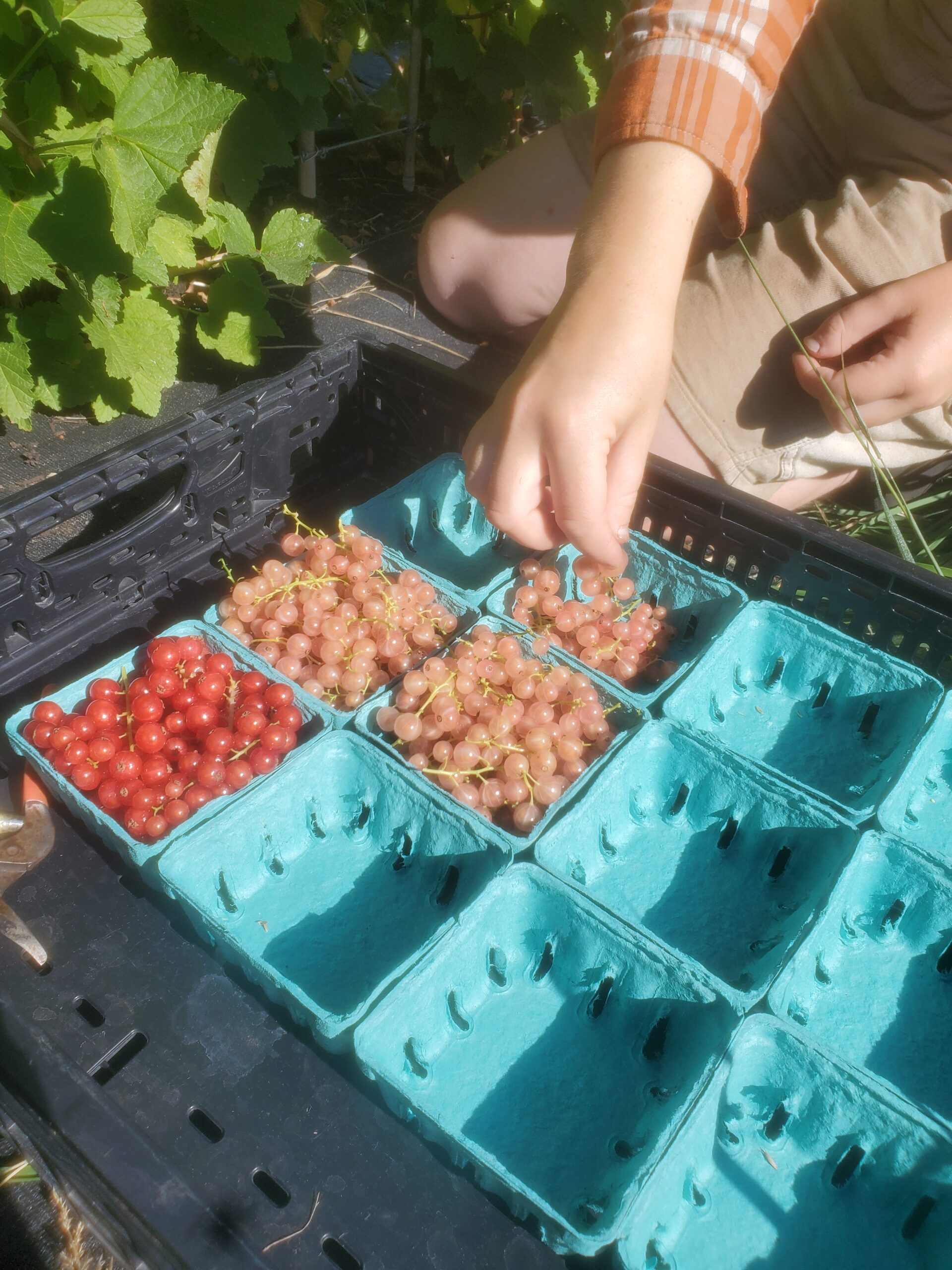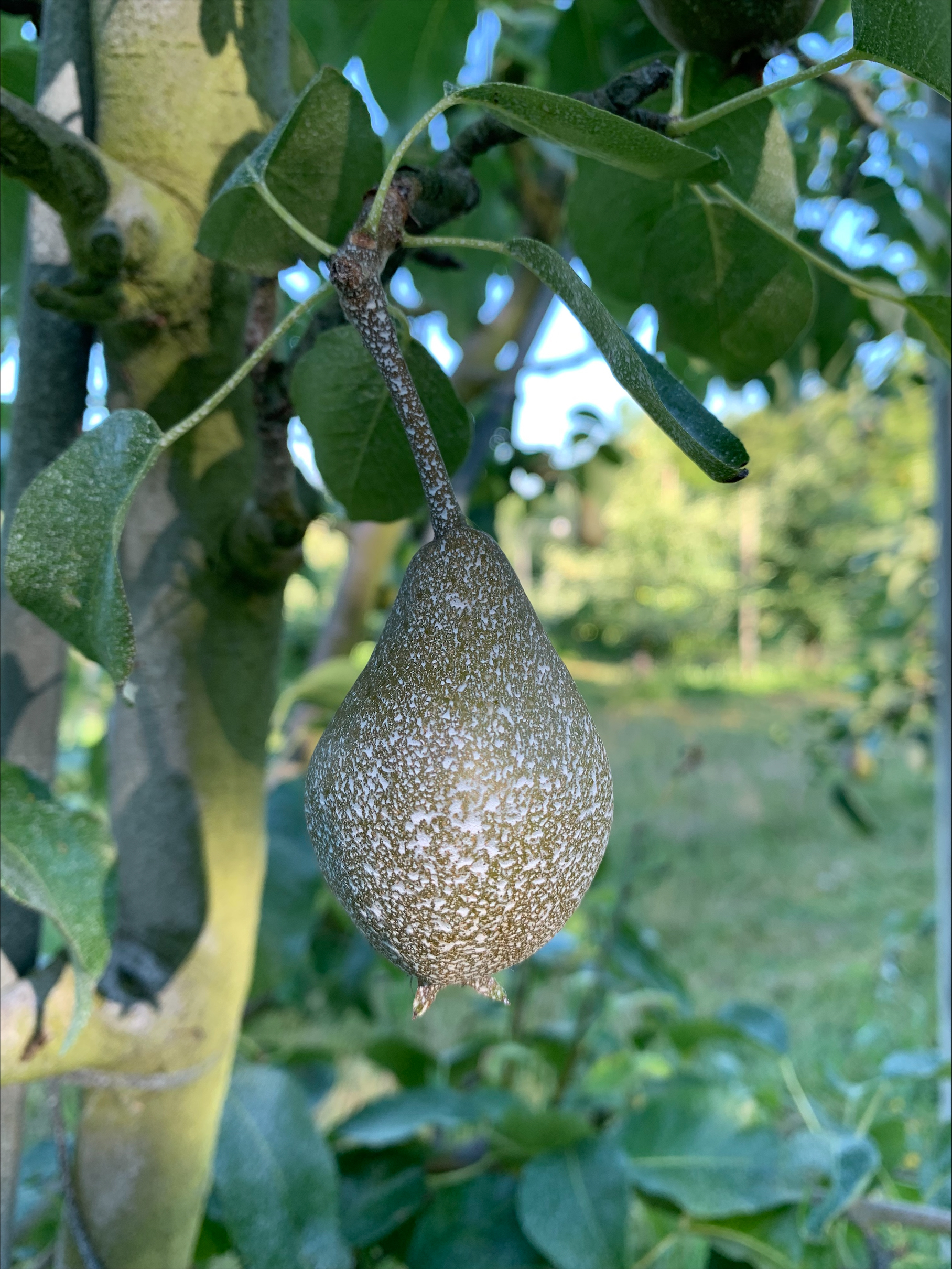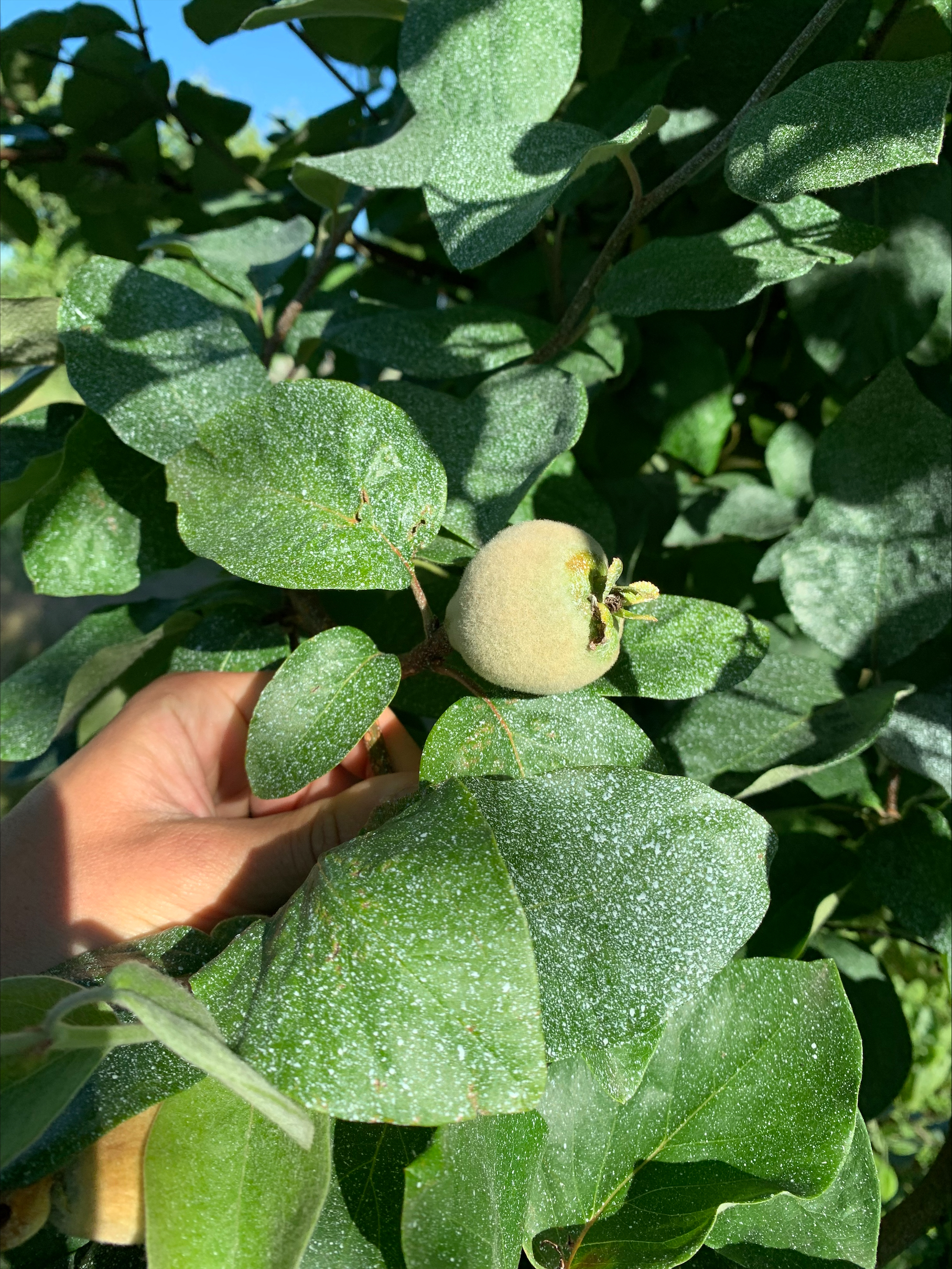
This week we’re harvesting currants, working on grape canopy management, continuing pest management in apples and pears, rennovating June Bearing strawberries, weeding and applying mid-season foliar and drip irrigation applied fertilizers.
Fruit/Bud/Tree Development
- Grapes are finishing up bloom with Lynden Blue already sizing nicely. Our grapes struggled a bit with the cooler wet spring, but appear to be pulling through with hotter, dry weather. That said, we’re anticipating a lower than ideal fruit set given spring conditions.
- Currant harvest is now in full swing with really nice first picks from our new rows. We’re seeing excellent sized fruit in currants as well as great sizing across apples and pears. This is likely one of the pros of ample early summer rain.
- Methley plums are just around the corner. Fruit is changing from green to yellowish-pink which will darken over the next 2 weeks or so into a dark purple. We’ll be deploying crutches for heavily loaded limbs to reduce risk of branch breakage.
Pest & Disease
- Now is the time of year where the first signs of codling moth damage begins to appear on apples. This is by far our most difficult and economically significant pest. We’re continuing sprays of Spinosad (Entrust), Summer Oil and Codling Moth Granulosis Virus in hopes of killing larval moths before they burrow into the fruit.
- With this week’s heat wave- sun burn of fruit becomes a concern. To manage this (as well as apple maggot fly, which emerges this time of year) we’re applying kaolin clay which creates a non-toxic white film over the leaves and fruit. This helps prevent sunburn and excessive heat stress on the trees while also providing a barrier against insect pests. Once our grape canopy management tasks are done, we will cover the grapes with insect netting to manage similar environmental and insect pressures.
- The cool wet start to summer has provided ideal conditions for the proliferation of anthracnose canker on some of our young apples. This is a very insidious fungal disease somewhat local to west of the cascades. Removal of infected trees is often the only solution. We are working to remove any and all sources of innoculum from the farm as well as trying some preventative sprays. With conditions warming up and drying out, our hope is that infection will halt for the remainder of the summer and any visible cankers can be removed.

Pear fruit protected from sunburn and insect pests by a layer of kaolin clay
What’s Ripe?
This week we’re harvesting: Cherries, pie cherries, currants and maybe gooseberries/jostaberrries.

Young Quince fruit beginning to size

